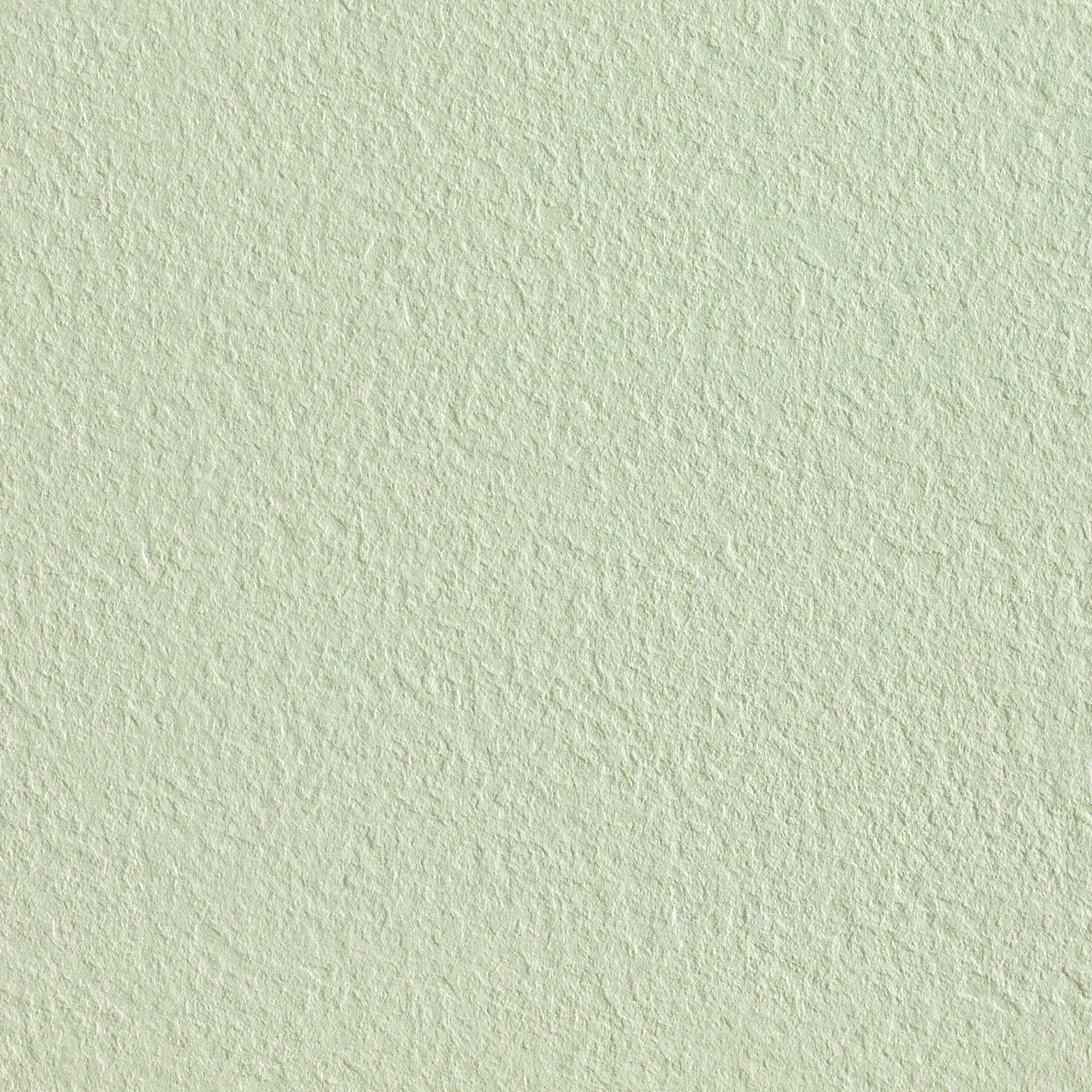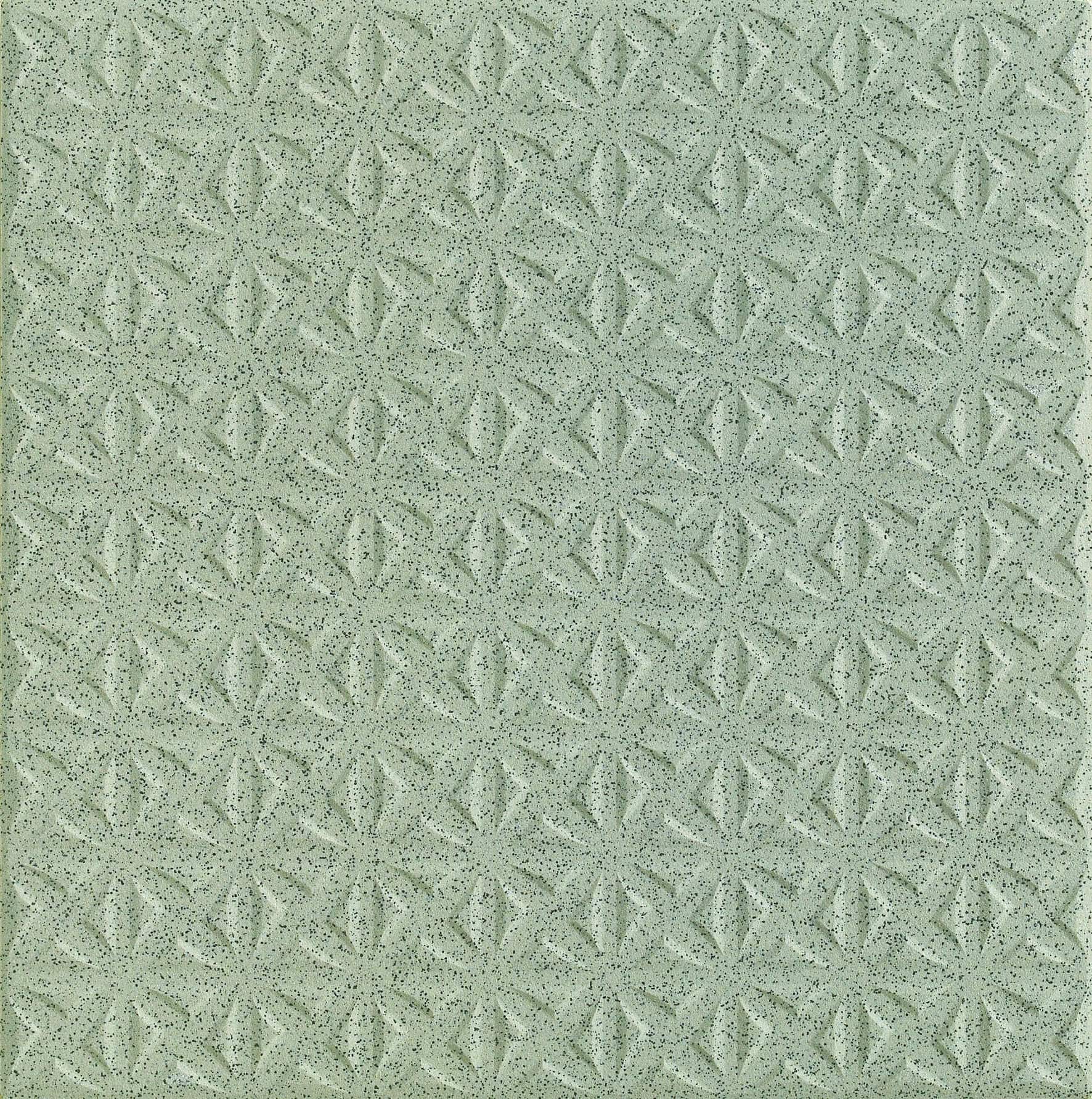説明
佛山モレラセラミックタイル, 我々は提供する 滑り止めセラミックタイル 商業スペース向け。当社のD2000ラインは、よく機能し、長持ちするため、多くの建設業者が信頼を寄せています。佛山市を代表するサプライヤーとして、私たちはお客様が信頼できる高品質の建設資材を提供することに誇りを持っています。
私たちのノンスリップセラミックタイルは、忙しいエリアのための厳格な安全基準を満たしています。これらのタイルは R11スリップ抵抗定格そのため、プール、バスルーム、キッチンなど、安全性が最も重要な場所に最適です。
のようなサイズがある。 200x200mm、厚さ9mmこのタイルは、激しい足の動きにも問題なく対応できる。
さまざまな分野の建築業者が、滑り止めと掃除のしやすさで当社のタイルを選んでいます。ひとつ重要なことがあります:当社の床タイルは 吸水率0.17%未満 EN 14411:2006規格に基づく。
当社のセラミック床タイルが、スタイルを犠牲にすることなく、空間をより安全にするのに役立つことをご覧ください!
要点
- モレラノンスリップセラミックタイルは、厳格な安全基準を満たしています。 R11スリップ抵抗定格.プールやキッチンなどの場所に最適です。
- これらのタイルには 低吸水率 0.16%から0.17%である。 湿潤環境に適している.
- D2000シリーズは、以下のタイルを提供します。 ピンク、スカイブルー、ベージュなど様々な色様々なデザインニーズに対応する。
- タイルの種類 丈夫な9mm厚 商業スペースでの激しい人の往来に対応する。
- モレラ・セラミック・タイル 簡単なクリーニングとメンテナンスそのため、長期にわたってコストを抑えることができる。
商業空間に滑り止めセラミックタイルを選ぶ理由
商業スペースでノンスリップセラミックタイルを使用することで、スリップや転倒のリスクを低減し、スタッフや訪問者にとって一歩一歩がより安全なものになります。多くの業界では、厳しい安全基準を満たす床タイルが必要とされています。そのため、当社では、滑り止めの試験に合格した認定セラミックタイルを使用しています。
人通りの多い場所での滑り止めの重要性
プール、キッチン、バスルームの出入り口、バルコニー、テラス、ホテルなど、人通りの多い商業スペースでは、スリップや転倒が怪我の主な原因となっています。DIN 51130のR11やASTM C1028のスリップテスト結果が0.71~0.84のような高評価のノンスリップセラミックタイルを選択することで、濡れた場所や水分の多い場所での作業員や訪問者のリスクを軽減します。
これらの技術基準は、階段や湿気の多い場所の近くでも床を安全に保ちながら、厳しい安全基準を満たすのに役立っている。
について テクスチャー 当社のガラス繊維強化セラミック床タイルは、キッチン、トイレ、プールデッキなど、人の往来が激しい場所や水や食べこぼしがある場所など、さまざまな場所でグリップ力と摩擦力を高めます。
耐久性のあるタイルデザインを使用することで、事故を未然に防ぎ、所有者の責任を軽減します。新築と改築の両方で技術的なコンプライアンス・ニーズを満たすことに重点を置く当社にとって、業界標準が滑り止めソリューションの選択プロセスをどのように形成しているかを理解することは重要です。
次へ商業用床タイルの安全基準とコンプライアンス。
安全基準とコンプライアンス
の重要性に基づいている。 滑り抵抗 人通りの多い場所では、商業空間のための厳格な安全基準とコンプライアンスも満たさなければなりません。当社のノンスリップセラミックタイルは、ヨーロッパのセラミックタイルのガイドラインであるEN 14411:2006に準拠しています。
これにより、当社の床タイルは、吸水性や耐久性といった重要な基準を確実にクリアしています。D2000シリーズは 吸水率 0.16%から0.17%の間で、浴室、キッチン、バルコニー、プールの周囲など湿気にさらされる環境に理想的なタイルです。
当社の滑り止めタイルのラインナップは、DIN51130分類のR11等級を保持しています。この規格は、ホテルや公共施設のトイレや玄関など、濡れた場所や危険性の高い場所に使用することを多くの専門家が推奨しています。
ASTM C1028スリップテストは、安全性が重要視される商業環境において、当社の耐スリップタイルが高い性能を発揮することをさらに証明しています。
インド全土の繁華街や世界各地の輸出市場で、過酷な天候や激しい使用環境下でも、スリップや転倒からお客様をしっかりと保護できるよう、すべてのバッチがこれらの技術要件に従っていることを確認しています。
これらの規制を満たすことは、佛山市民プールのような政府プロジェクトへの供給にも役立っており、ベージュからピンク仕上げまでのカタログ・オプションが実際に適していることを証明している。
これらの適合ガラス固化タイルは、常に利用者の安全を優先しながら、各スペースの機能にマッチするように、様々な表面デザイン-グリッドテクスチャまたはフラット-で利用可能です。
当社のカタログをダウンロードして、実験室での試験データ、アイボリーやダコタ・ベージュなどの色の選択、耐水性に関する技術資料など、製品の詳細をご覧ください。このようにして、国際的な業界規範と安全な環境に関する現場固有のニーズの両方に合致するノンスリップ床タイルを選択することができます。
モレラノンスリップセラミックタイル(D2000シリーズ)の概要
モレラD2000シリーズは、耐久性に優れ、滑りにくいセラミックタイルです。このノンスリップタイルは、スイミングプール、キッチン、バスルームなど人通りの多い場所に適しており、安全で人通りの多い商業フロアに理想的です。
製品サイズと仕様
D2000シリーズのセラミックタイルは、1枚200x200mmです。業務用の浴室や厨房に最適な床タイルです。厚さは9mmと厚く、耐久性に優れています。 人の往来が多い ホテル、バルコニー、プールなどの公共スペースで。
当社のセラミック・タイルには 低吸水率 わずか0.16~0.17%である。この特徴により、長期にわたる湿気によるダメージから保護される。
当社のノンスリップ・タイルは、EN 14411:2006規格に適合しており、プロ仕様のタイルの性能と安全性に適合しています。屋外でも、更衣室やバルコニーのような濡れた環境でも効果を発揮します。
滑り止め加工が施されたタイルは、雨天時や清掃後のスリップを防止し、スタッフにも来客にも安全です。
このカタログには、リビングルーム、廊下、階段、テラスのプロジェクトにカスタムソリューションが必要な場合、特別注文による他のサイズも掲載されています。すべての仕様は、業界標準によって定められた技術ガイドラインに従っているため、建設業者は、耐久性と簡単な清掃手順を必要とする商業施設の設置計画時に自信を持ってこれらのガラス固化タイルを選択することができます。
カラー・オプションには、ベージュ、ブラウン、ピンク、スカイブルーなどがあり、キッチンの壁や床、実用的でエレガントなデザインを必要とするバスルームなど、ほとんどの装飾ニーズにマッチする仕上げが用意されている。
各バッチは、プールサイドやフードサービス環境で見られる化学薬品に耐性を持ち、表面を汚さないように設計された高品質のセラミック素材で作られています。
実験室での試験結果では、わずか152mmの磨耗で測定された深い磨耗に対する高い耐性と、厳しい天候下での実証された長寿命のために、私たちはこのD2000コレクションのノンスリップフロアタイルをお勧めします。
利用可能な色と仕上げ
製品のサイズとスペックについて説明した後、以下の点に焦点を当てる。 カラーパレットと表面仕上げ D2000セラミックタイル多くの商業デザインスキームに適合する選択肢を提供します。
このシリーズには、ピンク、スカイブルー、ダコタベージュ、ブラウンがあります。バスルームやキッチンのタイルデザインに人気のカラーです。どの色調も、使用頻度が高くても、掃除をしても、鮮やかさを保ちます。
当社のセラミック・タイルは、厳しい品質チェックにより、長期間にわたってその美しさを保ちます。
表面オプションには、フラット、グリッド、テクスチャー仕上げがあり、以下のような現場特有のニーズに対応します。 耐滑性または美的スタイル.格子状の面は、バスルームやプールのデッキなど濡れた場所に適しています。平らな面は、玄関ホールやキッチンなど、掃除のしやすさが最も重要な場所に適しています。
テクスチャーを施したオプションは、足元のグリップを高めると同時に、床にユニークな装飾要素を与える。
このため、ホテルのロビー、テラス、バルコニー、リビングルーム、公共の場など、広いスペースでの施工がスムーズになります。 耐久性のあるノンスリップフロアタイル.
ビトリファイドタイルから伝統的な磁器質タイルまで、さまざまな組み合わせが可能です。長持ちする業務用セラミック床タイルを選ぶ際に、建築業者が日々直面する技術的な要求を満たすお手伝いをします。
モレラノンスリップセラミックタイルの主な特長
モレラセラミックタイルは、キッチンやバスルームのように人の出入りが多い場所でも、しっかりと滑り止め効果を発揮します。このタイルは表面が丈夫で吸水性が低いため、湿気や天候の変化にさらされてもスリップを防ぎます。
卓越した滑り止め性能(R11、ASTM C1028)
DIN 51130のR11認定を受けたノンスリップセラミックタイルで、最高の安全性を確保します。当社の床タイルは 濡れた路面や交通量の多い場所での強力なグリップ.ASTM C1028の結果によると、これらのセラミック表面の摩擦係数は0.71~0.84である。
これらの数字は、主要な国際基準を満たすか、上回っている。 業務用滑り止め規格.
当社のノンスリップフロアタイルは、バスルーム、キッチン、プールゾーン、バルコニー、テラスなど、湿気がリスクを引き起こす場所に適しています。ホテルや図書館、団地の玄関など公共の場所でのスリップや転倒を軽減する安全な床材として、建設業者は当社のタイル・カタログを選んでいます。
これらのセラミック・タイルは、その表面デザインと技術研究所での試験適合性により、屋内でも屋外でもうまく機能する。
FOSHAN Public Swimming PoolやNan Shan Estateのようなプロジェクトにおいて、当社のセラミックタイルソリューションは、人の往来が激しくても、天候が変化しても、安定した性能を発揮します。格子状の表面パターンはグリップ力を高め、ガラス化仕上げは水の浸入をシャットアウトします。
D2000シリーズは、サンド・デューン・ベージュ、ミスティ・トープ、スモーク・アイボリーに加え、オーカー・モスやチェスナット・ブラウンなどのアースカラー仕上げを施し、EN14411:2006の吸水率を含む厳格な基準に従って滑り止めのテストを実施しています。
使いやすいオンラインカタログをダウンロードし、信頼性の高いノンスリップフロアタイルの幅広いセレクションを提供することで、施工チームをサポートします。雨や毎日の清掃にさらされる商業施設のトイレやバルコニーの通路に設置されても、すべてのデザインがスリップ防止に妥協することなく快適さを促進します。
湿潤・高湿度環境に最適
私達のノンスリップのセラミックタイルはプール、台所および浴室のようなぬれた地帯で大きい働きます。これらのセラミックタイルに非常に 低吸水率 0.16%から0.17%の間である。
そのため、毎日湿気や激しい雨にさらされても、床の安全性が保たれる。私たちは、プールエリア、ホテルのバスルーム、レストランの厨房、屋外のバルコニーなど、常に湿度の高い場所で使用しています。
すべてのタイルは、吸水率に関するEN 14411:2006を含む湿潤環境の国際規格に適合しています。D2000シリーズのノンスリップフロアタイルは、表面に水が付着してもグリップ力を保ちますので、悪天候時のトイレや玄関でのスリップ防止に役立ちます。
厚さ9mm。 滑りにくいタイル 一日中安全性を重視しながらも、常に足を踏み入れることによる摩耗に強い。
また、このセラミック床タイルは、時間が経っても滑り止め機能を失うことなく、すぐにきれいになります。これは、私たちのプロジェクトカタログに掲載されているホテルや賑やかな公共スペースの主なニーズです。Moreraのガラス繊維強化製品を使用することで、インドやその他の極端な湿度条件のある世界各地の近代的な建築基準を満たす、信頼性の高い仕上がりで屋内バスルームとバルコニーテラスの両方を仕上げることができます。
耐久性と快適性のための9mm厚
濡れたり、湿度の高い環境から、長持ちし、安全性の高いタイルが求められています。このシリーズの各セラミック・タイルは 9mm厚.このため、これらの ノンスリップタイル キッチン、バスルーム、スイミングプール、バルコニーなどの商業スペースで、人の往来が多い場所でも十分な強度を発揮します。
9mmは、床タイルを硬すぎたり不快に感じさせたりすることなく、足元を適度にサポートすることがわかります。このガラス化タイルは、衝撃によるダメージに強く、長時間の使用でも快適です。
耐久性の高いグレードは業界のニーズにマッチしており、家具用カートや重い荷物の移動によるひび割れを防ぎ、屋外の天候にも耐える。
厚さ9mmのセラミック床タイルをお選びいただくことで、快適さを損なうことなく永続的な品質をお約束します。耐久性と掃除のしやすさの両面で高い基準をクリアしており、インド内外の公共洗面所、ホテルのロビー、テラス、リビングルーム、レストランなどに欠かせない特徴です。
スタイルと機能が一致し、技術的性能が重要な多忙なプロジェクトでは、このセラミックタイルがあらゆる段階で安心感を与えてくれます。
低い吸水率
頑丈な9mmの厚さから、私たちは次の点に重点を置いています。 吸水率私たちのノンスリップセラミックタイルで。当社のタイルは、わずか0.16%~0.17%の吸水率を保持しています。これはそれらに浴室、台所、プールおよび公衆便所のようなぬれたスペースのための非常に不浸透そして完全をします。
空隙率が低く、湿気を防ぎます。業務用タイルのEN 14411:2006規格に適合しており、安全性と耐久性を長期にわたって保証します。このセラミック床タイルは、最も忙しい厨房やプールサイドでも、汚れと戦い、カビや細菌の繁殖を防ぎます。
を使うことがいかに重要であるかがわかる。 滑りにくいタイル これは、ホテル、レストラン、バルコニー、テラス、リビングルーム、そしてインドの湿気の多い気候の中で人通りの多い玄関の衛生を向上させる。
また、吸水性が低いため、ノンスリップフロアタイルは毎日少ない労力で簡単に掃除ができます。
これは、更衣室やプールに近い屋外デッキなど、常に液体にさらされ、人の往来が多い場所での施工に重要です。
ピンク、ベージュ、クレマなど、モダンなインテリアのニーズに最適な選択肢を取り揃え、スタイリッシュでありながら機能的なカタログオプションを維持しながら、ビトリファイド技術で強度を高めています。
私たちの技術的なプロセスは、先進的なツールを使用した定期的なラボテストを通じて、これらの数字をバックアップします。これは、耐薬品性だけでなく、世界的にトップグレードの磁器タイルを使用する建設業者が期待する厳格なコンプライアンスベンチマークと並んで、深い摩耗性能も検証します。
簡単なクリーニングとローメンテナンス
セラミックタイルの滑らかで緻密な表面は、汚れやシミに強い。標準的な洗剤で洗浄しても、筋や残留物が残ることはありません。キッチン、バスルーム、プールゾーンなどの日常的な清掃にかかる時間は、このデザインにより短縮されます。
私たちのノンスリップフロアタイルは、忙しい玄関や濡れた商業用トイレでも明るいままです。
ホテルやリビング、バルコニーなどのメンテナンスコストを抑えることができます。湿気や食べこぼしにも強く、耐久性に優れています。 人の往来が多い.
そのため、食品調理室や公共のシャワールームのような場所でも、手間をかけずに厳しい衛生ニーズを満たすことができます。Moreraのタイルカタログを使用することで、人通りの多い場所でも、静かな寝室でも、メンテナンスが簡単な仕上げを選ぶことができます。
表面仕上げとデザイン・オプション
さまざまなプロジェクトのニーズにお応えするため、幅広い表面仕上げをご用意しています。浴室用タイルとキッチン用タイルの両方のプロジェクトで、建築家や施工業者が適切なスタイルと強力な滑り止めをマッチさせるのに役立ちます。
平面
商業空間におけるノンスリップ床タイルの平らな表面仕上げ
を使用している。 平面仕上げ は、多くの商業環境で均一でモダンな外観を提供します。このオプションは、ビジネスロビーやオフィスの廊下など、洗練されたタイルデザインが重要な場所で人気があります。
当社のセラミック・タイルは、シンプルで清潔な空間を保ちながら、重要な安全要件をサポートします。
このセラミック床タイルの平らな表面は、浴室、キッチン、玄関などで、カートや台車、足の運びが楽にできます。滑り止め等級(R11)が業界基準を満たしているため、雨の日や清掃中もスタッフや来客が安全に過ごせます。
これらの床タイルには 低吸水率 これは、忙しいキッチンやバスルームには欠かせないディテールだ。
このフラットな仕上げにより、定期的な清掃が短時間で済むため、ホテル、プール、レストラン、医療廊下、バルコニー、テラスなどのメンテナンスのダウンタイムが短縮されます。当社のカタログには、ピンクやダコタベージュなど数種類のカラーバリエーションが掲載されており、デザイナーは、当社の滑り止めセラミックタイルの技術的性能を維持しながら、どのようなプロジェクトスタイルにもマッチさせることができます。
屋外の階段やバルコニーなど、気象条件に対する耐久性が必要な場合は、ガラス固化タイルのカタログでより多くのオプションをご覧ください。モレラセラミックタイルD2000シリーズは、丈夫でエレガントな滑り止めタイルを必要とする様々な商業プロジェクトにおいて、機能性と外観の両面から信頼性の高いソリューションを提供します。
グリッド面
業務用タイルで優れた滑り止め性能を発揮するグリッド表面
セラミックタイルのグリップ力を高めるため、格子状の表面を使用しています。このパターンにより、足元の摩擦が増し、バスルーム、キッチン、プールエリア、バルコニーなど、常に湿気のある商業施設に最適です。
について テクスチャーデザイン 水をタイルの表層から遠ざけ、水たまりを減らし、スリップ防止に役立ちます。
グリッド仕上げのタイルは厳格にパスする 滑り止めテスト R11やASTM C1028規格に適合しています。傾斜のある玄関、プールサイドの更衣室、混雑したホテルの階段など、安全性を第一に考える場所には、このノンスリップフロアタイルをお勧めします。
インドやその他の地域でよく見られる雨天や高湿度の環境では、この表面はタイルのデザインに機能を加えながら、人々の安全を守るのに役立つ。
模様の隙間から簡単に水が抜けるので、掃除も簡単です。また、9mmの厚みは、足元の快適さを損なうことなく強度を確保します。重いキッチンカートやホテルの家具を移動させても、この耐久性のあるガラス化タイルを傷つけることはありません。
ウェンジ、ベージュ、ピンク、ネロ・ブラウン、サンド・デューンなどの色から、リビングルームの床や屋外のテラスなど、どんなインテリアスタイルにもマッチするものをお選びください。
これらのセラミック床タイルは、大規模な企業プロジェクトや小規模な商業用途のいずれにおいても、毎年信頼性の高い性能を発揮し、メンテナンスが容易です。EN14411:2006のような国際的な権利遵守基準を満たす強力なタイルソリューションを必要とする次の建築のために、技術仕様を直接ダウンロードしてください。
テクスチャード・サーフェス
グリッド表面から移動すると、次のようになる。 テクスチャー・セラミック・タイル は、商業スペースの安全性に大きな違いをもたらします。この仕上げは、盛り上がったパターンと深い溝を使い、足元の摩擦を最大化する。
このノンスリップセラミックタイルは R11スリップ抵抗定格 ASTM C1028基準でテスト済み。特に湿気の多いプールやキッチン、調理場の近くでは、作業員や来客がグリップ力の高さに気づくでしょう。
プールデッキやレストランの出入り口など、危険性の高い場所にはこのセラミック床タイルをお勧めします。それぞれのタイルの触感が、濡れた床が存在する可能性があることを人々に知らせ、忙しいバスルームや更衣室でもスリップ防止に役立ちます。
当社のD2000ガラス固化タイルは、その耐久性を維持します。 滑り止め 水や油にさらされても大丈夫。そのため、人通りの多いバルコニーやテラス、バスルームに最適だ。 低吸水率また、EN 14411:2006に準拠し、お手入れも簡単です。
色の選択:ピンク、スカイブルー、ダコタベージュ、ブラウン、その他
ピンク、スカイブルー、ダコタベージュ、ブラウンなど、セラミックタイルのカラーバリエーションは豊富です。これらの カラーチョイス バスルーム、キッチン、プールエリア、バルコニーなど、多くの商業スペースにフィットする。
それぞれの色合いは、タイル本体全体で一貫しています。 ハイトラヒック そしてクリーニング。
当社のカタログには、プロジェクトのニーズやブランディングテーマに合わせた、より多くのオプションも掲載されています。耐久性のある仕上げは、日光や湿気による色あせに強く、ホテルやトイレでの毎日の使用に適しています。
スタイルと耐久性を求める方には、ビトリファイドタイルもご用意しています。私たちは、それぞれの顔料を厳選し ノンスリップフロアタイル テラスや階段、エントランスゾーンなど、長年にわたって酷使されても美しさを保ちます。
技術性能とラボ試験
モレラのセラミックタイルは、EN14411:2006やASTM C1028などの世界的な規格に適合していることを確認するため、滑り性、吸水性、耐薬品性などの試験を実施しています。
当社のノンスリップフロアタイルが、安全性、強度、防湿性などの実際の要求にどのように耐えるかをご覧ください...次のプロジェクトのために、これらの厳しい結果についての詳細をお読みください。
耐薬品性
私たちは、D2000シリーズのセラミックタイルが厳しい条件下でも持ちこたえると信じています。各タイルは以下の厳しいテストを受けています。 耐薬品性 その技術的性能の一部として。厨房、トイレ、工場などでは、業務用洗浄剤が毎日使用されている。
当社のガラス固化組成は、酸、アルカリ、塩溶液、洗剤、その他の過酷な薬剤に耐える緻密な表面を作り出します。
このタイプの保護は、繰り返しの洗浄サイクルの後でも、元の仕上げの新しい外観を維持します。当社のビトリファイドタイルは、バスルームやキッチンで見られる一般的な薬剤にさらされても、シミや侵食は見られません。
ノンスリップフロアタイルはまた、その耐久性を維持する。 滑り止め を含む洗浄剤にさらされても、だ。 高糖分 またはプール施設に見られる化合物。
ホテルやレストランのような公共スペースでは、安全性と衛生のために頻繁なメンテナンスが不可欠です。当社のセラミックはEN 14411:2006規格に適合しており、浴室の床やキッチンのカウンタートップでよく使用される漂白剤や消毒剤を含む攻撃的な物質に対する耐久性について、実験室でのカタログ試験を受けています。
このコレクションの床タイルは、湿気の蓄積による変色を防ぐと同時に、水場近くのバルコニーや天候の変化に影響される屋外テラスなど、使用頻度の高いゾーンでの長寿命をサポートします。
マットなピンク、ダコタ・ベージュのようなベージュ、そしてオンラインカタログに掲載されているスタイリッシュな仕上げなど、14種類以上の選択肢からお選びいただけます。
施工のプロは、これらの技術仕様に関するカタログの詳細を確認することができるため、病院のトイレ改修プロジェクトで選択する場合であれ、こぼれやすいリビングルームの表面を改良する場合であれ、長持ちする外観と強力な耐性が最も重要なあらゆる現場で、適切なソリューションを得ることができる。
深い耐摩耗性
当社のセラミック・フロアタイルには、厚さ9mmのビトリファイドボディを使用しています。これにより、傷や擦れに対して強くなっています。当社のノンスリップ・タイルは、次のような厳しいラボ試験に合格しています。 深い耐摩耗性.
プールのデッキやキッチン、商業施設のバスルームなど、人通りの多い場所でも、このセラミック・タイルはしっかりと持ちこたえます。
毎日人の往来が激しい床タイルは、その表面を安全かつ滑らかに保つ必要があります。当社のビトリファイドタイルは、長期間使用してもほとんど磨耗しません。EN 14411:2006の吸水規格にも適合しており、タイル本体への水分の浸入を防ぎます。
その結果、ダルスポットが発生しにくくなり、長期間にわたって安定した耐滑性を発揮する。
ダコタベージュやスカイブルーなどのノンスリップセラミックタイルは、見た目も性能もシャープです。これらのセラミックタイルは、強度が最も重要な玄関、テラス、バルコニーに最適です。
人通りの多い場所での美しさと安全性の両方が要求されるプロジェクトでは、当社の耐久性に優れた製品が通常のフローリングソリューションに勝ることを確認すると同時に、メンテナンスチームが簡単に清掃できるようにしています。
耐摩耗性に関する技術仕様の詳細については、オンラインカタログのセクションをご覧いただくか、モレラセラミックタイルD2000シリーズの全カタログを今すぐダウンロードしてください。
吸水適合性 (EN 14411:2006)
深い耐摩耗性から、私たちは次に焦点を当てる。 吸水コンプライアンス EN 14411:2006で要求されています。当社のセラミックタイルは、常に0.16%~0.17%の低吸水率を達成しています。
このレベルの性能は、人通りの多い空間におけるセラミック床タイルの厳しい商業基準を満たしている。
ロットごとに精密な品質管理を行い、各タイルを固定しているため、完成した表面は水分の浸透に耐えます。これらのノンスリップセラミックタイルは、プール、バルコニー、バスルーム、キッチンなどのウェットゾーンに最適です。
空隙率が低いため、汚れがつきにくく、表面下でのバクテリアの繁殖を抑えることができる。
ホテル、レストラン、商業用トイレなど、天候の変化や頻繁な洗濯から床タイルを保護する必要があるあらゆる場所で、プロジェクトの耐久性を確保するために、建築の専門家はこの技術仕様を信頼しています。
EN 14411:2006の試験方法で認定された当社のガラス固化セラミックは、設置が簡単である一方、あらゆるカタログオプションが、毎日湿気にさらされ続ける酷使される環境でも安全であることを保証します。
厳しい管理体制がこれらを保証する。 滑りにくいタイル 多くのカタログに掲載されている標準的な選択肢よりも安全性と安心感が優れており、輸出プロジェクトや、タイル設計ソリューションに最高レベルの防湿性を求める現地建築に必要な基準をすべて満たしています。
モレラノンスリップタイルの適用分野
モレラのノンスリップセラミックタイルは、商業用バスルーム、キッチン、スイミングプールなど、多くのプロジェクトで使用されています。これらの床タイルは、水分が一般的で堅牢な滑り止め性能が必要とされる交通量の多い環境に安全性とスタイルを提供します。
プールと更衣室
スイミングプールのデッキや更衣室のタイルは、常に湿気があってもスリップを防止しなければなりません。当社のD2000ノンスリップセラミックタイルは R11スリップ抵抗.プールエリアでは、裸足や濡れた足で歩くすべての人を守るために、このセラミックタイルが信頼されている。
と 低吸水性また、ロッカールームやシャワーのような湿度の高い場所でも、床タイルはより早く乾き、グリップ力を保ちます。
施設管理者は、以下の基準に適合するセラミック床タイルを選択する。 ASTM C1028 規格.9mmの厚みは、通行量の多い場所での使用に耐える強度を備えています。これらのガラス化タイルは、プールの清掃ルーチンに見られる過酷な化学薬品に耐えるので、激しい摩耗や厳しい気象条件下でも新品同様の外観を保ちます。
私たちは、安全性と長持ちする性能に重点を置き、主要な公共プールに浴室タイル・ソリューションを提供してきました。
ピンク、ダコタベージュ、スカイブルー、ブラウン、ローズウッドなどのタイルカラーオプションは、モダンなアクアティックセンターやスパゾーンの装飾ニーズにマッチしながら、新鮮な外観を作り出します。セラミックタイルの表面は、フラット、グリッド、テクスチャーがあり、霜が降りやすい季節も含め、あらゆる季節に快適な足元をお約束します。
濡れた場所と同様に耐久性のあるノンスリップ・フロアタイルが重要なキッチンや食品調理ゾーンには、次に適したデザインをお勧めします。
厨房と食品調理ゾーン
業務用厨房や調理場では、床タイルに最高の性能が求められます。当社の厨房用セラミックタイルは、厚さ9mmで耐久性に優れています。食べこぼしや油汚れ、頻繁な清掃にも耐えます。
テクスチャー加工された表面は強力なスリップ抵抗性(R11等級)を発揮し、水分や油分がある場合でもしっかりとした足場となるため、事故防止に役立ちます。
滑り止めのASTM C1028や吸水性のEN 14411:2006など、業界の安全衛生基準を満たしています。防汚性、耐薬品性に優れた表面は、食品調理ゾーンに見られる厳しい清浄規則をサポートします。
清掃スタッフは、このノンスリップセラミックタイルを簡単に洗うことができます。 ローメンテナンス仕上げ.これらの特長により、ホテル、レストラン、ベーカリー、カフェテリア、ケータリングキッチンなど、常に清潔な状態を保たなければならない商業環境に理想的なタイルとなっています。
次のページ:当社のタイルが、商業施設のトイレや玄関にも安全なソリューションを提供していることをご覧ください。
商業用トイレと玄関
D2000について ノンスリップセラミックタイル 商業施設のトイレや玄関に最適です。吸水性が低いため、これらの場所をドライで安全に保ちます。強力なトイレ用洗浄剤を何千回も使用しても、タイル表面が摩耗することはありません。
各タイルは R11スリップ抵抗定格 とASTM C1028規格に準拠しているため、スリップ防止に役立ちます。
と 汚れにくい表面また、タイルの表面は、ほとんど手間をかけることなく、きれいな状態を保つことができます。ピンク、スカイブルー、ダコタベージュ、ブラウンなど、ホテルや公共施設など、どのようなタイルデザインにもマッチするカラーバリエーションを取り揃えています。
について 9mm厚 は、スタッフや来客の毎日の使用に耐える強度を備えています。これらの特長により、当社のセラミック床タイルは、プールサイドの浴室や雨天にさらされる濡れた玄関に最適です。
私たちは、ビトリファイドタイルの技術要件に適合させながら、カタログコレクションのすべての製品に美しい仕上げを施しています。これにより、建設業者と設計者の両方が、公衆トイレや人通りの多い出入り口のような水分の多い条件下で、魅力的でありながら実用的な空間を作り出すことができます。
バルコニー、テラス、屋外スペース
バルコニーやテラスは、雨や日差し、気温の急激な変化にさらされることがよくあります。このような屋外スペースにモレラのセラミックタイルを使用するのは、耐候性に優れているからです。セラミックタイルには 低吸水率 0.16%から0.17%であるため、水分が構造を弱めたり、経年劣化によるシミの原因となることはない。
テラスのような屋外エリアには、強力な防風林が必要だ。 安全のための滑り止め私たちのノンスリップフロアタイルは、R11規格とASTM C1028の要件を満たしています。
D2000シリーズのカタログからテクスチャー仕上げやグリッド仕上げを選び、エクステリアの歩道や階段、バルコニー、パティオで高いグリップ力を発揮します。ベージュ、ピンク、ダコタブラウン、スカイブルーなど、さまざまな色からお選びいただけます。
タイルは、インドのホテルや商業施設の外でもスタイルと機能の両方を維持し、通常の磁器タイルに比べて耐久性に優れているため、ガラス化された表面が人気のある選択肢となっている。
滑りにくいタイルを使用することで、雨の多い季節でも転倒を防ぐことができ、メンテナンスも簡単なので、あらゆる種類のバルコニーデザインやテラスプロジェクトに対応できる。
ケーススタディ成功したモレラタイルプロジェクト
当社のセラミック床タイル、ノンスリップタイル、ビトリファイドオプションが、スイミングプールのデッキ、キッチン、バスルーム、テラスなどのスペースの安全性と機能を向上させた実際の施工例をご紹介します。
タイルのデザインの選択、天候の変化に対する性能、業界基準を満たした商業施設のカタログ例など、詳しくは続きをお読みください。
佛山市民プール
D2000シリーズのノンスリップセラミックタイルを佛山市民プールプロジェクトに供給しました。これらのタイルは R11スリップ抵抗プールサイドのすべてのエリアで、スイマーとスタッフの安全性を高める。
当社のフロアタイルは、厳格な業界基準に従い、スリップや転倒の防止に役立ちます。
塩素処理された水に毎日さらされ、タイルの表面が試されました。当社のセラミック・フローリングは、プールの化学薬品と洗浄剤の両方によく対応し、次のような結果を示しました。 強い耐薬品性 日光による色落ちや色あせがない。
について 厚さ9mmのデザイン は、人通りの多いこのスペースに耐久性を与え、同時にメンテナンスの簡素化を実現しました。このサクセスストーリーは、プールや更衣室のような公共環境でのタイル施工において、技術的性能と認定された品質をいかに重要な要素として使用しているかを浮き彫りにしている。
次に、耐久性に優れたビトリファイド・タイルが、余分な湿気のある困難な空間で違いを生み出したもうひとつの例である、南山エステートについての事例詳細をご紹介します。
南山エステート
南山エステートの共同ゾーンに選ばれた。 ノンスリップセラミックタイル 安全性とスタイルの両方を提供します。人通りの多い場所でも高い耐久性を発揮するよう、厚さ9mmのタイルを使用しています。この厚みは、住民や訪問者の激しい往来があっても、タイルを長持ちさせるのに役立ちます。
R11のような高い滑り止め性能は、バルコニーや階段、玄関のような湿気の多いスペースに理想的です。
ピンク、スカイブルー、ダコタベージュ、ブラウンなど、豊富なカラーバリエーションと団地の内装目的に合わせた仕上げにより、モダンな外観をお楽しみいただけます。当社のセラミック床タイルは、雨天時のエレベーターや廊下でのスリップを防止し、より安全な移動をサポートします。
EN 14411:2006基準を満たす低吸水率のセラミックタイルは、施設スタッフの汚れや清掃の手間を軽減します。その結果、南山団地の日々のニーズに合った強力な素材選択の上に、安全な環境が構築されています。
佛山市立図書館
南山団地での仕事を終えた私たちは、次に佛山市立図書館のプロジェクトに注力しました。ここでは、D2000シリーズを設置した。 ノンスリップセラミックタイル すべての出入り口と共用エリアに設置。
これらのゾーンは、次のような処理を行う。 人通りが多い スリップ防止は安全の最優先事項である。
当社の床タイルは、フラット仕上げとグリッド仕上げの両方があり、タイルデザインに多様性を持たせています。その 低吸水率 これらのタイルは、余分な手入れがほとんど必要ないことを意味し、毎日多くの人が訪れても、掃除は素早く簡単に行えます。
私たちはそれに従った。 EN 14411:2006 規格 公共施設に求められる厳しい品質基準に適合するよう、細心の注意を払った。認定を受けたセラミック・タイルを使用することで、湿気を抑制し、長期的なメンテナンス・コストを削減するとともに、混雑する図書館スペースでの安全な移動をサポートした。
正しいモレラノンスリップタイルの選び方
私たちは、各プロジェクトの安全性とデザインの必要性を研究しています。モレラのノンスリップセラミックタイルをお選びいただくためのガイドとして、スリップ評価、タイルサイズ、仕上げなどの技術データをカタログに掲載しています。
デザインと機能性のマッチング
私たちは、商業プロジェクトごとに、フラット、グリッド、またはテクスチャー仕上げを選択します。これらのタイル表面は、安全要件を満たすのに役立ち、部屋の外観を追加します。忙しいキッチンやバスルームには ノンスリップセラミックタイル それは R11の滑り止め性能.
プールや更衣室のような濡れた場所では、より高いグリップ力が必要とされるため、私たちは足元がしっかりと固定される格子状の床タイルやテクスチャー加工された床タイルを選びます。
タイル・デザインでは色も重要です。ピンク、スカイブルー、ダコタベージュ、ブラウンなど、ブランディング・ガイドラインやインテリアのニーズに合わせた色調をご提案します。適切な色を選ぶことで、空間を明るく心地よいものに保つと同時に、人の往来が多い場所でも汚れを隠すことができます。
厚さ9mmのタイルは足元の快適さをサポートし、通常の使用による深い摩耗にも耐える。
照明も重要です。トイレやホテルの廊下のような薄暗い場所では、明るいセラミック床タイルを使用することで、スタイルを損なわずに視認性と安全性を高めることができます。どの表面タイプも、毎日水や湿気にさらされても、確かな防滑性を発揮します。
モレラセラミックタイルD2000シリーズカタログのオプションを慎重に使用することで、必要に応じてビトリファイドの選択も含め、ホテル、厨房施設、玄関、バルコニー、テラスなど、基本的にあらゆる場所で機能と外観のバランスをとることができ、人通りの多い商業環境に理想的なタイルです。
適切な選択により、レストランや図書館のような公共の場でのスリップのリスクを軽減し、清掃員が必要とする簡単な清掃作業をサポートします。と 強い耐薬品性 EN 14411:2006規格に適合。 低吸水率-このセラミックタイルは、頻繁なモップがけにも耐えるため、美観を保ちながら効果的に危険防止を図りたい現代の施設管理チームにとって欠かせないものとなっている。
スペースの使用パターンに基づいた仕上げの種類、インテリアのテーマに応じて選択された色、業界基準への準拠を保証するラボテストによって確認された技術仕様など、すべての要素に注意が払われ、その結果、当社の豊富なカタログに掲載されている幅広いプロジェクトにおいて、永続的な実用性と視覚的な魅力の両方を備えたノンスリップフロアタイルが作られています。
交通と安全への配慮
タイルのデザインと空間の機能をマッチさせた後、私たちは通行量と安全性のニーズに焦点を当てます。厨房、プール、トイレ、バルコニーなど、人通りの多い商業エリアでは、床は酷使され、湿気も多くなります。
このような環境では、セラミック床タイルを指定します。 R11スリップ抵抗.この等級は、濡れた場所や傾斜のある場所でのスリップ防止に役立ちます。
厚さ9mmのセラミックタイルを採用し、耐久性と足元の快適性を高めています。これらのノンスリップタイルは、以下のような重要な業界基準を満たしています。 ASTM C1028 トラクション用.また、浴室や風雨にさらされるテラス付近の表面の安全性を保つため、吸水性のチェックも行っている。
例えば、当社のガラス固化タイルは 低空隙率 EN 14411:2006に準拠し、長期間にわたって水による損傷を防ぐ。
FOSHANの公共プールのような実績のあるプロジェクトを調べると、耐薬品性が日々の清掃作業を支えていることがわかります。モレラのセラミック床タイルは、その技術的性能により、このような過酷な環境にも耐えることができます。ホテルの厨房や屋外階段など、さまざまな用途のエリアにおいて、リスクレベルを低く抑えながら、清掃のしやすさを維持しています。
過去の施工事例から得たカタログデータと滑り止めの要件を照らし合わせることで、カートの移動や足の運びが多いリビングやワークスペースにおいて、安全なフローリングソリューションと長期的な価値を両立させます。
モレラノンスリップセラミックタイルに関するFAQ
モレラのノンスリップセラミックタイルについて、建設業者様からのご質問にお答えします。D2000シリーズのセラミックタイルは 高R11スリップ抵抗DIN 51130およびASTM C1028による試験で、0.71から0.84の値を示した。
各タイルの標準サイズは200x200mmで、厚さは9mm。
これらのセラミック床タイルは、以下のEN 14411:2006規格に適合しています。 吸水率はわずか0.16%~0.17%.湿気の心配が少なく、掃除が簡単なため、プール、キッチン、バスルーム、バルコニーなどで使用している。
カラーは、ピンク、スカイブルー、ダコタベージュ、ブラウンなどがあり、様々なインテリアにマッチします。建築業者の方は、オンラインでカタログをダウンロードするか、当社専属サプライヤーのモレラ・カンパニーまでお問い合わせください。 これらのタイル・デザインに関するカタログやテクニカル・サポートはこちらから。激しい人の往来や天候の変化にも耐える安全なフローリング・ソリューションを必要とするあらゆる商業プロジェクトに最適です。
結論モレラでより安全でスタイリッシュな商業空間を創造する
佛山モレラノンスリップセラミックタイルは、賑やかな商業エリアに安全でスタイリッシュな空間を作り出すお手伝いをします。当社のD2000セラミックタイルは 滑り抵抗水気の多いキッチンやバスルーム、プールのデッキに最適です。
ピンク、スカイブルー、ダコタベージュ、ブラウンなど豊富なカラーバリエーションで、安全性を保ちながらどんなタイルデザインにもマッチする。その お手入れが簡単な表面 手間をかけずにフロアタイルの鮮度を保つことができる。
これらを使うことで 耐久性のあるセラミック床タイル 私たちは、ホテルや公共施設のような各カタログ・プロジェクトにおいて、すべてのタイル施工における快適性とリスク管理の基準を高めています。
よくある質問
1.何が佛山モレラ滑り止めセラミック タイル (D2000) 商業使用に適していますか?
佛山モレラノンスリップセラミックタイル(D2000)は、LaufenやSomany Ceramicsと同様、高い業界基準を念頭に設計されています。これらのタイルは、その審美的な魅力を高めるだけでなく、滑り抵抗の余分な層を提供するユニークなグラファイト仕上げを備えており、安全性が最も重要である商業環境に最適です。
2.佛山モレラノンスリップセラミックタイルはNitcoやCottoタイルと比較してどうですか?
佛山モレラノンスリップセラミックタイルは、NitcoやCottoタイルと同様に、業界のベストプラクティスに準拠しています。しかし、その特別な滑り止め機能により、商業スペースのような交通量の多い場所でも安全性を確保することができます。
3.佛山モレラノンスリップセラミックタイルについての詳しい情報はどこにありますか?
これらの特定のセラミック・タイルや1800シリーズ内の他のセラミック・タイルについてのより詳細な情報については、技術仕様や特徴を含む各タイル・バリエーションの包括的なレビューを提供する当社の製品ブログをご参照ください。
4.D2000モデルのグラファイト以外の色はありますか?
はい!人気のグラファイトカラーのほかにも、D2000ではさまざまなインテリアデザインにマッチする幅広い色合いをラインアップしています。






レビュー
まだレビューはない。